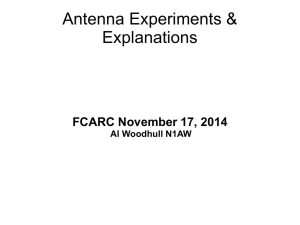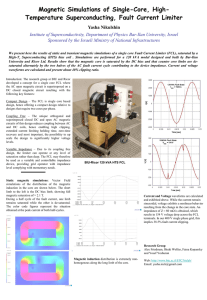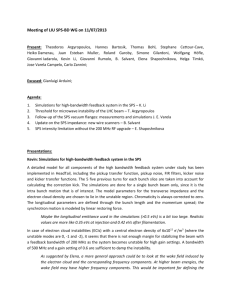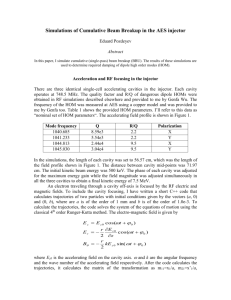SPSU_2015.08.06 - LIU-SPS Beam Dynamics Working Group
advertisement
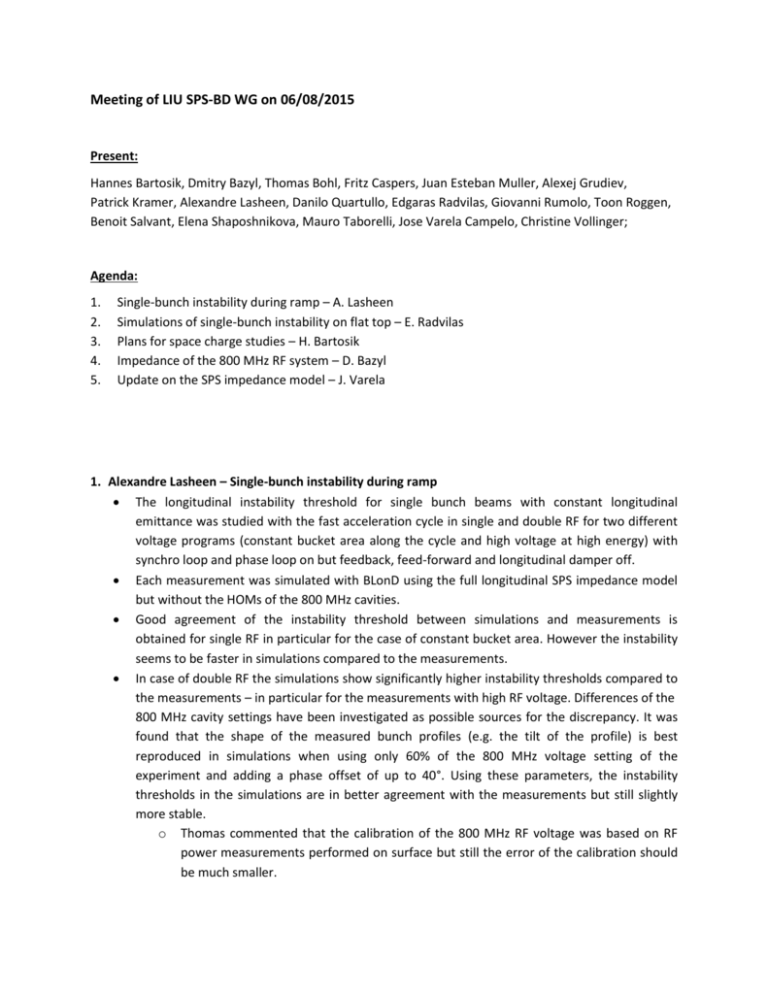
Meeting of LIU SPS-BD WG on 06/08/2015 Present: Hannes Bartosik, Dmitry Bazyl, Thomas Bohl, Fritz Caspers, Juan Esteban Muller, Alexej Grudiev, Patrick Kramer, Alexandre Lasheen, Danilo Quartullo, Edgaras Radvilas, Giovanni Rumolo, Toon Roggen, Benoit Salvant, Elena Shaposhnikova, Mauro Taborelli, Jose Varela Campelo, Christine Vollinger; Agenda: 1. 2. 3. 4. 5. Single-bunch instability during ramp – A. Lasheen Simulations of single-bunch instability on flat top – E. Radvilas Plans for space charge studies – H. Bartosik Impedance of the 800 MHz RF system – D. Bazyl Update on the SPS impedance model – J. Varela 1. Alexandre Lasheen – Single-bunch instability during ramp The longitudinal instability threshold for single bunch beams with constant longitudinal emittance was studied with the fast acceleration cycle in single and double RF for two different voltage programs (constant bucket area along the cycle and high voltage at high energy) with synchro loop and phase loop on but feedback, feed-forward and longitudinal damper off. Each measurement was simulated with BLonD using the full longitudinal SPS impedance model but without the HOMs of the 800 MHz cavities. Good agreement of the instability threshold between simulations and measurements is obtained for single RF in particular for the case of constant bucket area. However the instability seems to be faster in simulations compared to the measurements. In case of double RF the simulations show significantly higher instability thresholds compared to the measurements – in particular for the measurements with high RF voltage. Differences of the 800 MHz cavity settings have been investigated as possible sources for the discrepancy. It was found that the shape of the measured bunch profiles (e.g. the tilt of the profile) is best reproduced in simulations when using only 60% of the 800 MHz voltage setting of the experiment and adding a phase offset of up to 40°. Using these parameters, the instability thresholds in the simulations are in better agreement with the measurements but still slightly more stable. o Thomas commented that the calibration of the 800 MHz RF voltage was based on RF power measurements performed on surface but still the error of the calibration should be much smaller. o The correction of the measured bunch profile with the pick-up transfer function might also play an important role and will be taken into account. Further studies will include investigations about possible missing impedance contributions. Furthermore, simulations will be performed to assess the instability thresholds for the different options of the vacuum flanges impedance reduction campaign. The higher RF voltage available and the modified impedance of the RF after the RF upgrades during LS2 need to be taken into account. 2. E Radvilas - Simulation of single bunch instability at flat top A simulation study of the single bunch intensity threshold of the longitudinal instability at flat top was performed for different longitudinal emittances and different voltage settings in single and double RF. In some cases a non-monotonic behavior of the instability thresholds is observed in the simulations, i.e. islands of stability are found for certain combinations of small longitudinal emittance and high intensity. This effect can be explained by the increased synchrotron frequency spread due to the large induced voltage for these cases. The instability thresholds in double RF are in general higher compared to single RF. When the vacuum flanges are completely removed from the impedance model an increase of the instability thresholds is observed in particular for the case of high RF voltage. 3. H. Bartosik – space charge The space charge studies in 2012 showed that a vertical space charge tune spread of up to 0.21 is compatible with the LIU budgets for losses on the flat bottom and emittance growth. Open questions for the SPS are mainly if the same tune spread can be achieved with 25 ns beams and if even higher tune spreads can be digested, what is the optimal working point for high brightness beams and what is the interplay between space charge and other collective effects like e-cloud and TMCI. Measurements of the linear and non-linear machine optics are ongoing. Working point scans with high brightness single bunch beams are planned for the near future in order to study potential limitations from resonances above the present working point such as the Qy=20.25. o For the moment there are no dedicated correction magnets available in case the Qy=20.25 turns out to be a strong limitation for the maximum beam brightness. In case needed, it might be considered to install octupole correction magnets. o It was proposed to test injecting RF noise on to the flat bottom to modify the bunch profile such that the peak line density is reduced. 4. D. Bazyl – Impedance of 800 MHz cavity The longitudinal impedance of the 800 MHz cavities was characterized both in simulations using CST and in measurements. The simulations of the total accelerating voltage and the accelerating field along the longitudinal direction are in good agreement with lab measurements based on the Bead-pull technique. The systematic error on the position measurement of the probe is understood and a correction factor is available. Two important HOMs at 1.9 and at 2.6 GHz have been identified in CST wakefield simulations. The R/Q of the first HOM at 1.9 GHz is about 90 Ohm as measured on the bench and reproduced in the simulations. Measurements of the mode at 2.6 GHz are yet to be performed. 5. J. Varela – Update on impedance model of the SPS travelling wave cavities An updated model of the SPS 200 MHz TWC cavities including the longitudinal HOM couplers was presented. The HOM coupler designed for the resonance at 630 MHz suppresses also other HOMs at 550 MHz and at 660 MHz to some extend, but is less efficient for the modes around 915 MHz. The impedance spectrum of the 5 tank cavities is found to be slightly different compared to the 4 tank cavities. Maybe a small modification the existing HOM couplers could be sufficient to suppress the HOMs of the 200 MHz cavities. After the LIU RF upgrade the cavities will be re-arranged to modules of 4 tanks but also to modules of 3 tanks. The corresponding impedance model remains still to be established. There are presently no HOM couplers in the 800 MHz cavities, but they could be designed and installed in case needed. Compared to the total SPS longitudinal impedance only the mode at 1.93 GHz seems to be relevant. Minutes written by Hannes Bartosik





